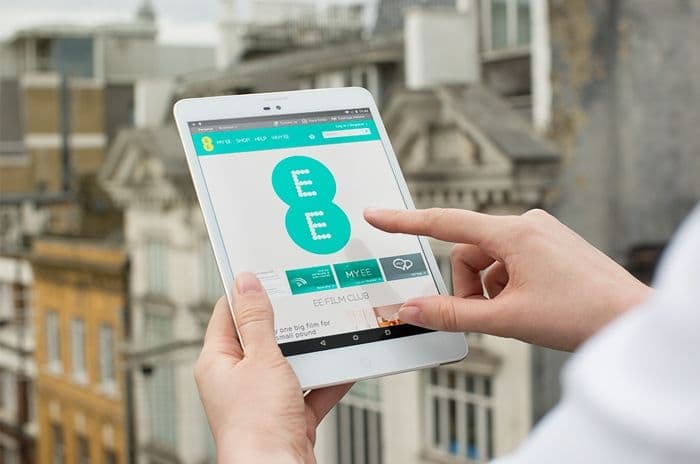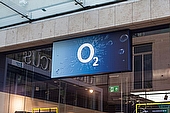Home > Mobile > News > Challenges in rolling out 5G infrastructure revealed by EE
Challenges in rolling out 5G infrastructure revealed by EE
EE switch on 5G at 9 East London trial sites but warn that upgrading the mobile network faces significant challenges.
The latest 5G trial designed to help EE perfect their rollout processes has resulted in 9 sites being made live in busy areas of East London. However, the company has also revealed some of the challenges they face in deploying 5G.
It comes as Three completes key steps towards bringing 5G to customers in 2019 and improves their 4G mobile speeds in densely populated areas.
Mobile carriers are in a race to become the UK's first network offering both consumers and businesses 5G in 2019. Infrastructure investment and trials are underway in various locations across the UK, including in the West Midlands.

Challenges posed by upgrade
While the upgrade from 3G to 4G was often able to use repurposed equipment, the new 5G network requires up to 3 50kg antennas installed on some roof sites. This can cause major issues in strengthening rooftops to cope with the extra load and delays in obtaining planning permission and access.
Carriers also must ensure that their new equipment stays within the guidelines for public exposure to power output laid down by the Government.
Howard Watson of EE's parent company BT commented: "Deploying this brand new layer of our EE mobile network is far from straightforward, and this trial has helped us to understand - and learn how to overcome - the significant challenges that we'll face in the coming years."
Both EE and Three are working with the Government to speed up the processes of rollout. The West Midlands Urban Connected Communities Project is part of this, allowing models of deployment to be tested to help the development of regulation for the new 5G networks.
Where is this EE trial taking place?
9 sites have been made live by EE in the East London trial: Provost Street, City Road, Central Street, Old Street, Cheapside, St Paul's, Finsbury Circus Garden, Clerkenwell Street and Bartholomew Square.
The option to use 5G as an alternative to fixed broadband is being offered to consumers and businesses in these areas as part of the trial to assess the customer experience of the rollout.
Across in Canary Wharf, live 5G is also being trialled and an EE lab in Borehamwood is the home of device functionality testing. The race to be the first provider to rollout 5G commercially has been at the forefront for all major networks this year, triggering competition that has occasionally spilled out into angry words.
What are other networks doing?
Three are investing over £2bn in infrastructure to prepare for the arrival of 5G. This includes new cell site technology and new a super high-capacity dark fibre network to connect its secure data centres together.
Three CEO Dave Dyson commented of the advent of 5G: "It opens up new possibilities in home broadband and industrial applications, as well as being able to support the rapid growth in mobile data usage."
Meanwhile, Vodafone claimed a victory in October by becoming the first company to carry full 5G over a commercial network in Salford and O2 are conducting their own trials with a focus on testbed opportunities for corporations.
These advancements take place against the backdrop of a row earlier this year between O2 and EE, with O2 arguing that any 5G launched before 2020 would be a 'lite' version and that it will lack speed and security capabilities. EE refuted this by pointing out that all mobile technologies evolve following launch and that calling it '5G lite' was "confusing" for consumers.
What are the benefits of 5G?
Much like the leap from 3G to 4G, this next step is projected to be a huge boost to internet speeds. Home users are likely to be able to use 5G as an alternative to fibre broadband in areas where it's over capacity or unavailable.
Consumers may also benefit from increased value for money, as highlighted in a Deloitte report commissioned by the Government which comments, "Evidence suggests that the availability of mobile broadband unlocks new forms of consumer value, for example by enabling innovative apps and services."
On a commercial level, 5G has the potential to revolutionise how we work, and that may lead to increased productivity. This also raises the possibility of increase remote working in much the same way that 4G has improved the ability of employees in many industries to operate remotely.
What happens next?
Nothing is set in stone for 5G launches yet and no mobile carrier has committed to a launch date for the rollout to consumers and businesses. EE and Three say that commercial launch is expected to take place sometime in 2019, but O2 continue to contend that will be a 'lite' version.
In the meantime, carriers have been busy upgrading their networks to get ready for the changes. For instance, in September, EE announced upgrades to over 500 of its 3G towers as they switch them over to 4G. These sites are predominantly in cities and are defined by EE as demand hotspots.
Get insider tips and the latest offers in our newsletter

We are independent of all of the products and services we compare.

We order our comparison tables by price or feature and never by referral revenue.

We donate at least 5% of our profits to charity, and we have a climate positive workforce.
Latest News

05 December 2024
Merger of Vodafone and Three UK approved
19 August 2024
New O2 Essential Plan for those on social benefits
06 August 2024
Three UK moves to pounds and pence annual price risesGet insider tips and the latest offers in our newsletter


